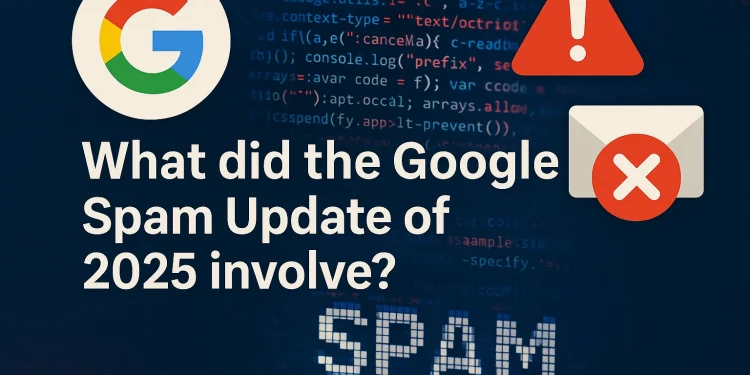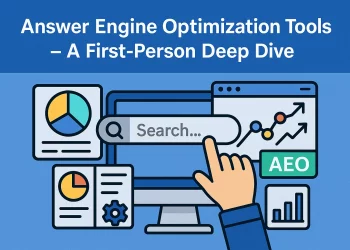Google is back at it again—raising the bar and shaking up the search engine landscape. If you’ve noticed volatility in the SERPs, backlinks suddenly losing value, or AI content getting hit, you’re not alone. The Google Spam Update 2025, especially the Google August 2025 Spam Update, has introduced major changes that every SEO, blogger, and business owner needs to understand.
This guide breaks down everything about the spam update, google link spam update, spam update google, and how the latest google update spam algorithm works.
Let’s dive right in.
What Is the Google August 2025 Spam Update?
The Google Spam Update August 2025 is one of the most aggressive spam-fighting rollouts Google has released in years. It targets websites and SEO tactics that try to manipulate rankings using:
-
Low-quality AI-generated content
-
Unnatural backlink patterns
-
Paid link placements
-
Link insertions
-
Spammy guest post networks
-
Hacked or cloaked pages
This update directly enhances SpamBrain, Google’s AI-driven spam prevention system.
How Is It Different From Previous Spam Updates?
Google’s 2023 and 2024 spam updates were strong—but the 2025 update is smarter.
It focuses heavily on:
-
AI-generated spam content
-
Behavioral spam signals instead of only content patterns
-
Real-time updates instead of monthly batch updates
Google is essentially trying to “think like a human editor” for the first time.
Understanding the Google Update Spam Algorithm
Google’s 2025 spam algorithm update brings three major improvements:
1. AI-Powered Detection Enhancements
SpamBrain is now 5x better at detecting AI-generated content that lacks originality, depth, or genuine value.
This means:
✔ AI content is allowed
✖ Low-effort AI spam will be penalized
2. Behavioral Pattern Analysis
Google no longer just reads content; it studies behavior.
It now monitors:
-
Link growth velocity
-
Anchor text manipulation
-
Patterns of external linking
-
Sudden topic changes
-
User engagement quality
3. Real-Time Spam Identification
Instead of waiting for monthly refreshes, spam signals are now continuously updated.
Sites can lose (or gain) rankings within hours.
Google Link Spam Update 2025
This is one of the biggest parts of the 2025 spam update. Google has finally cracked down harder on link-related manipulation.
1. Crackdown on Paid Link Schemes
Buying high DA links is riskier than ever. Google now recognizes:
-
Link marketplaces
-
PBNs
-
Sponsored link farms
-
Bloggers who sell link insertions secretly
-
Over-optimized guest posting services
2. New Rules for Guest Posts
Guest posting is still legal—when done right.
But Google now devalues:
-
Thin guest post networks
-
Duplicate author bios
-
Keyword-rich anchors
-
Mass guest posting on irrelevant sites
3. How Google Evaluates Link Authenticity
Authentic links now rely on:
-
Relevance
-
Contextual placement
-
Natural editorial flow
-
Traffic-driven sources
-
User engagement
Google wants links people actually click—not just links for SEO.
The Impact of the Spam Update on SEO
1. Rankings Are Volatile
Websites with weak content or spammy link profiles saw drops between 20% to 90%.
2. Backlink Profiles Are More Heavily Scrutinized
Links from irrelevant domains now count against you.
3. AI-Generated Content is Under the Microscope
Google doesn’t hate AI…
It hates lazy AI.
Sites with:
-
Repetitive content
-
Content with no depth
-
Poor human editing
…have suffered significantly.
Types of Spam Targeted by Google in 2025
1. Link Spam
Any link whose sole purpose is SEO manipulation.
2. AI-Generated Spam
Mass-produced content without originality.
3. Hacked Spam
Injected Japanese or casino keywords.
4. Cloaking & Redirect Spam
Showing Google one page and users another.
Industries Most Affected
1. Affiliate Sites
Especially those relying on product roundup spam.
2. Travel Blogs
Because of aggressive link insertions.
3. Finance Websites
Heavily targeted due to affiliate spam.
4. News Aggregator Sites
Duplicate content and scraped AI articles are hit hardest.
How to Recover From the Google Spam Update August 2025
If you were impacted, recovery is possible.
1. Clean Up Toxic Backlinks
Use:
-
Google Search Console
-
Ahrefs “Link Audit”
-
Disavow tool (only if necessary)
2. Improve Content Quality
Rewrite pages with:
-
Depth
-
Original insights
-
Data
-
Human experience
3. Fix Technical Spam Issues
Remove:
-
Duplicate pages
-
Thin pages
-
Redirect chains
-
Cloaked content
4. Request a Reconsideration (Only for Manual Penalties)
If your site received a manual action, submit documentation showing your cleanup work.
How to Protect Your Website in the Future
1. Focus on E-E-A-T
Experience
Expertise
Authoritativeness
Trust
Google rewards real humans with real experience.
2. Use Natural Link-Building Strategies
Earn links—not buy them.
3. Avoid Shady Automation Tools
Mass content generators and link automation systems now leave detectable footprints.
Best Practices for Link Building After the 2025 Update
1. Earn Real Editorial Links
From:
-
Niche blogs
-
Brands
-
Magazines
-
Journalists
2. Niche-Relevant Guest Posts Only
Stay within your industry.
3. Zero-Footprint Outreach
Personalized outreach beats mass pitching.
Tools to Check Spam Scores & Backlink Health
Google Search Console
Great for identifying manual actions.
Ahrefs, Moz, SEMrush
Check toxic links, spam scores, and anchor text ratios.
Siteliner
Great for duplicate content detection.
Case Studies: Before & After the 2025 Spam Update
1. A Site That Lost Rankings
A travel blog using paid guest posts lost 70% of traffic.
2. A Site That Gained Rankings
A niche authority site that rewrote AI content and removed spammy backlinks gained 40% traffic.
3. Lessons Learned
Google rewards relevance and authenticity.
SEO Strategies Moving Forward in 2025
1. Content Depth & Topical Authority
Cover topics extensively, not superficially.
2. Engagement Signals
User actions now influence rankings more than ever.
3. Brand Building
Brands beat blogs in Google’s eyes.
Conclusion
The Google Spam Update 2025, including the Google August 2025 Spam Update, represents one of the most significant transformations in Google’s approach to detecting and eliminating spam in recent years. This update is not just a mild adjustment—it’s a complete realignment of how Google evaluates link patterns, content authenticity, and overall website integrity. Tactics that once helped websites climb the rankings—such as aggressive link building, mass-produced AI content, and low-quality guest posting—are now considered clear liabilities that can drag a site down or even trigger penalties.
Google’s evolving spam algorithms are designed to reward sites that prioritize genuine value, user experience, and credible, trustworthy content. The shift signals a new era where quick wins and manipulative shortcuts no longer work. Instead, the big winners are brands and creators who invest in high-quality content, authentic backlink profiles, real expertise, and long-term SEO strategies.
To stay competitive in this rapidly changing landscape, website owners and SEOs must adapt. Embrace transparent practices, focus on building topical authority, and ensure every piece of content serves a real purpose for users. The future of SEO isn’t about gaming the system—it’s about aligning with it.
SEO isn’t just evolving—it’s maturing. The sooner you adapt, the faster you’ll rise above the competition.
FAQs
1. What is the Google Spam Update 2025?
It’s an algorithm update designed to remove spammy, manipulative, or low-quality content and links from Google search results.
2. Does Google penalize AI content?
Not at all. Google only penalizes low-quality AI or AI-generated spam.
3. What is the Google Link Spam Update?
It targets manipulative backlinks, paid links, and unnatural link patterns.
4. How do I recover from a spam update drop?
Clean up backlinks, improve content, fix spam issues, and enhance E-E-A-T.
5. Why did my backlinks suddenly stop counting?
Google may have devalued them if they were irrelevant, paid, or obviously manipulative.













